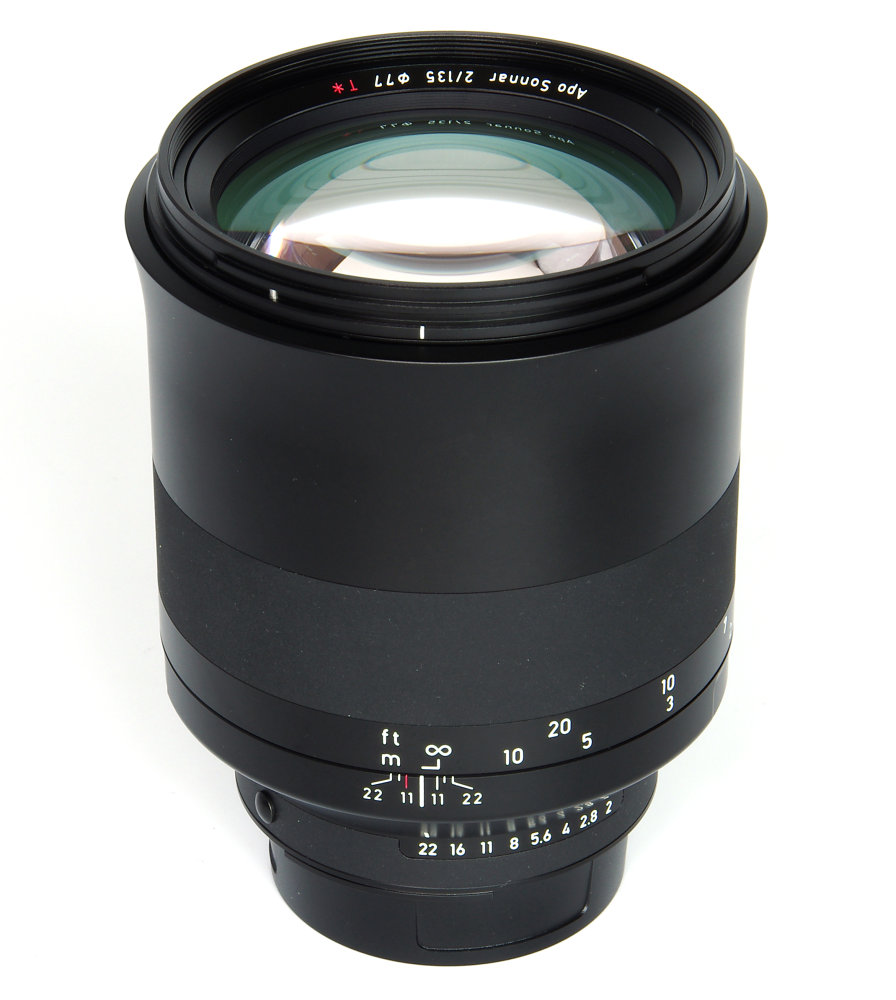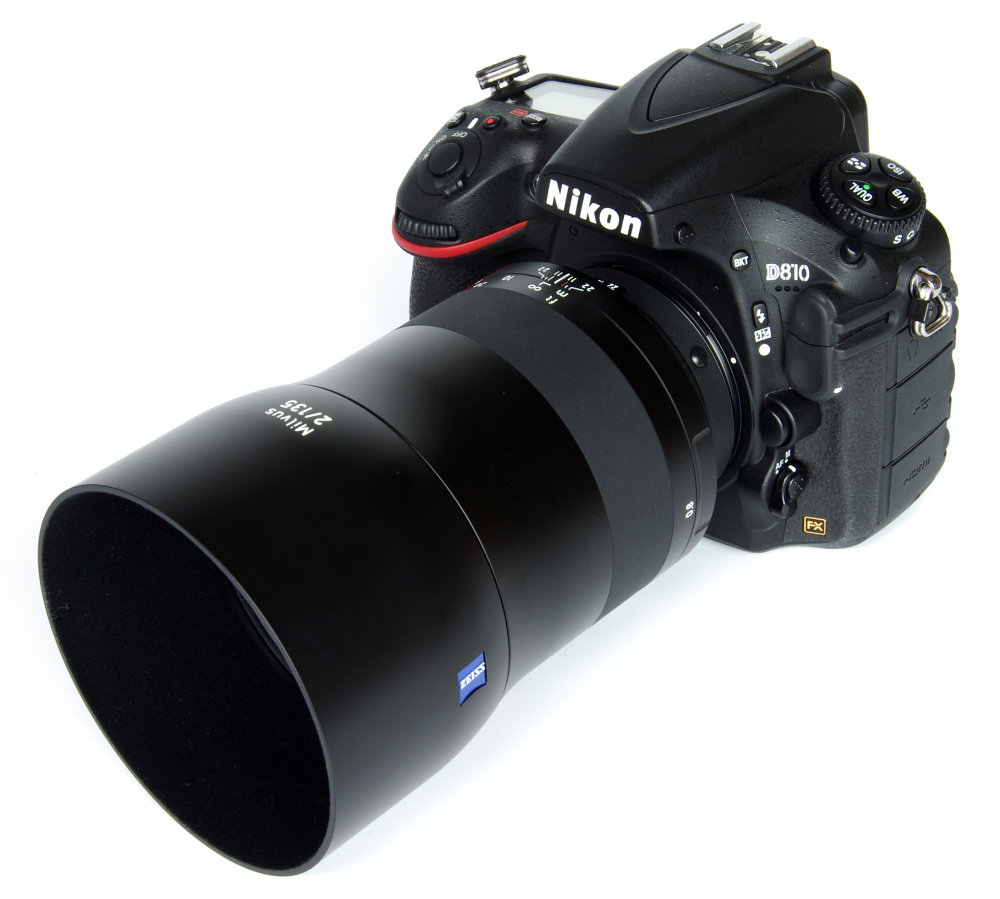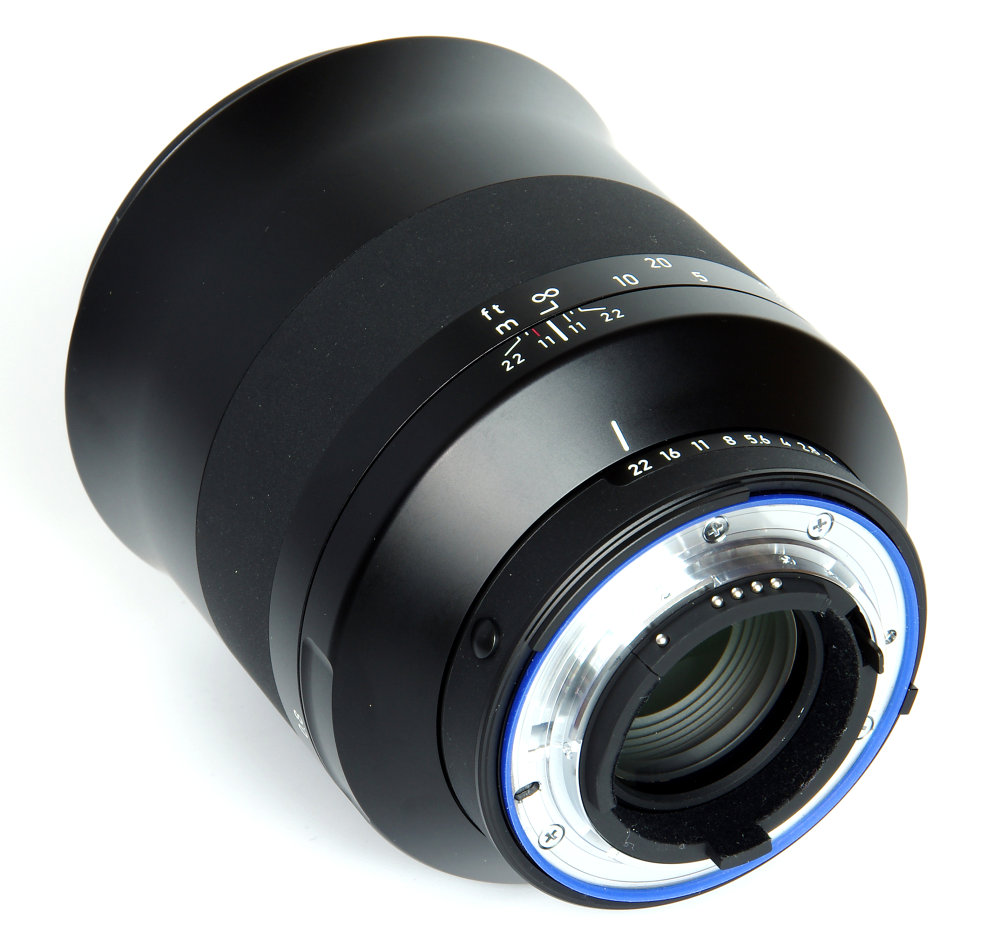Zeiss Milvus 135mm f/2.0 Review
Zeiss Milvus 135mm f/2.0 Handling and Features
Made in Japan, the manufacturing quality is not in doubt. The metal finish is beautifully engineered and all controls are as smooth as silk. The Milvus 135mm f/2 is a solid, beautiful object in its own right, weighing in at a hefty 1059g (Nikon fit) and 1123g (Canon fit). There is a 77mm filter thread.
The metal lens hood has a flocked interior and bayonets onto the lens very precisely. This should protect the front element as well as helping to avoid flare. When we peer into that front element we see the aperture of 9 blades, virtually circular to enhance the bokeh of the lens. The Zeiss T* coatings render the glass almost invisible to the eye.
There is little to adorn the lens, but what there is offers good ergonomics. The focusing ring is very smooth and a pleasure to use. In the case of the 135mm there is no internal focusing, but the lens racks forwards as we focus in the traditional way. This does mean that the overall length extends as we focus closer. A depth of field scale is offered, but there are only markings for f/11 to f/22, there being so little depth of field that it is of limited usefulness. Markings are clear and distances given in feet and metres. Focusing is down to 0.8m, or 31.44 inches (2.62 feet), giving a maximum magnification of 1:4. This is one quarter life size and is usefully close for a 135mm lens.
The aperture ring has soft but positive click stops and in the Nikon version can actually be de-clicked using a small screw on the metal lens mount. On the Nikon D810 used for this review, the aperture is controlled by the camera, so the aperture ring on the lens is set to its click stop position of f/22.
Optical construction is 11 elements in 8 groups, using a floating element design to maintain performance at all distances. There are 4 Anomalous Partial Dispersion elements to further enhance the performance. The lens is designated as apochromatic, which means all the colours are focused on the same point, preventing colour fringing. As we will see later, this is highly effective.
Finally, the lens is resistant to moisture and dust, which is a definite benefit and one increasingly found at all levels of lens manufacture. The benefits of being able to brave the elements are not to be underestimated.
Handling the lens is a total pleasure. The slim depth of field means that focusing is a breeze – the sharpest point of focus is very easy to judge as it snaps in and out very acutely. This makes manual focusing so much easier than with wide angle lenses. However, depth of field is very small, so accurate focusing still needs care to make the most of the available definition.
Add your message
Please login here or if you've not registered, you can register here. Registering is safe, quick and free.
photodo Stats
428 MTF tests
74 in-depth photodo reviews
100+ users join each day
Help the lens community by reviewing or rating a lens today via our lens search
Latest Lens Reviews
- Chinon 28mm f/2.8 Vintage Lens Review
- Canon EF 70-200mm f/4L IS II USM Lens Review
- Samyang AF 85mm f/1.4 EF Review
- Sigma 70mm f/2.8 DG Macro Art Review
- Samyang AF 24mm f/2.8 FE Review
- Meike 50mm f/1.7 Review
- Tamron 70-210mm f/4 Di VC USD Review
- Lensbaby Burnside 35mm f/2.8 Review
- Asahi Super Takumar 50mm f/1.4 Review
- Asahi Super-Multi-Coated Takumar 135mm f/3.5 Review



